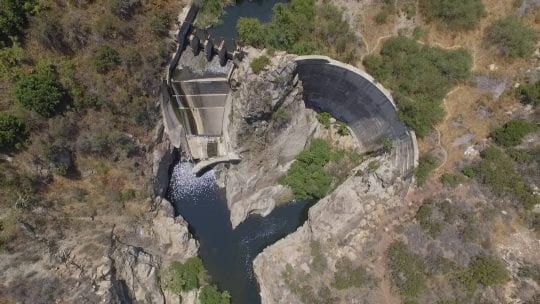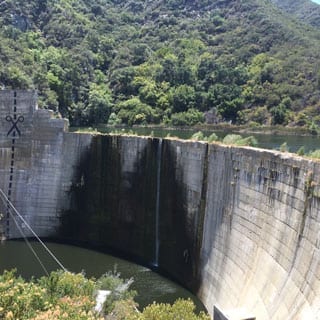Two SoCal dams on their way out
Two dam removal projects in Southern California are continuing to move forward. One of the largest threats to trout, steelhead and salmon are dams. Rindge Dam on Malibu Creek and Matilija Dam on Ventura River have degraded their surrounding ecosystems and the native fish have suffered. CalTrout has been fighting for the recovery of Southern California steelhead and fish passage improvement in these areas for decades. Dam removal is an incredibly slow process due to the coordination needed between multiple agencies and organizations. The hefty price tag to do the job further complicates matters.

A removal plan for Rindge Dam is set to be finalized within the next couple months by the California Department of Parks and Recreation and the U.S. Army Corps of Engineers. The plan has been in the works since the 1990s. This is the same plan that we asked you, our followers, to read and provide public comment in favor of dam removal back in early 2017. Thanks for speaking up when it matters most!
Rindge Dam has been decommissioned since 1967 after filling with sediment. Since its construction 90 years ago, steelhead have not been able to reach high quality spawning grounds in upper Malibu Creek. Southern steelhead recovery is one of CalTrout’s Key Initiatives. The NMFS’ Southern Steelhead Recovery Plan classifies Malibu Creek as a Core 1 watershed. Core 1 populations are those populations identified as the highest priority for recovery actions based on a variety of factors. The dam limits access to high quality aquatic spawning and rearing habitat, captures sediment and alters flow, impacting the amount and quality of downstream habitat. Though we’re a step closer in removing Rindge Dam, the project will likely not begin until 2025.

As for Matilija Dam, earlier this month the Ventura County Board of Supervisors approved a contract for technical studies on removing the dam. They’ve hired engineering firm AECOM to find a way to reduce the impact from the built-up sediment behind the dam, while minimizing costs and time. This is Phase 1 of the $3.3 million Matilija Dam Removal 65% Planning Design Project that CalTrout helped develop; this is the last planning part of the project. Field work is expected to begin this summer and the final feasibility report to be completed summer 2019. (Read more about this story in the Ojai Valley News.)
Candice Meneghin, CalTrout’s Program Manager based in Ventura had this to say about the latest news: “Last year CalTrout and UC Davis’s SOS II report listed the concern for Southern steelhead as critical – with species extinction likely within my lifetime. The top three anthropogenic threats being major dams, urbanization, and estuary alteration. That stark reality is my daily motivation! Seeing both Matilija and Rindge dam removals moving forward and gaining momentum, on Ventura River and Malibu Creek respectively, gives me much hope for recovery and to keep on keeping on!
CalTrout is also engaged in FERC relicensing for Pyramid and Santa Felicia dams on Piru Creek, a principle tributary of the Santa Clara River watershed. Our litigation and intervention on the operation of Bradbury Dam on Santa Ynez River are ways in which we are also guiding dam reoperations that adequately incorporate climate change, build resilience, and balance the needs of both fish and people.”
Photos by Mike Wier.




